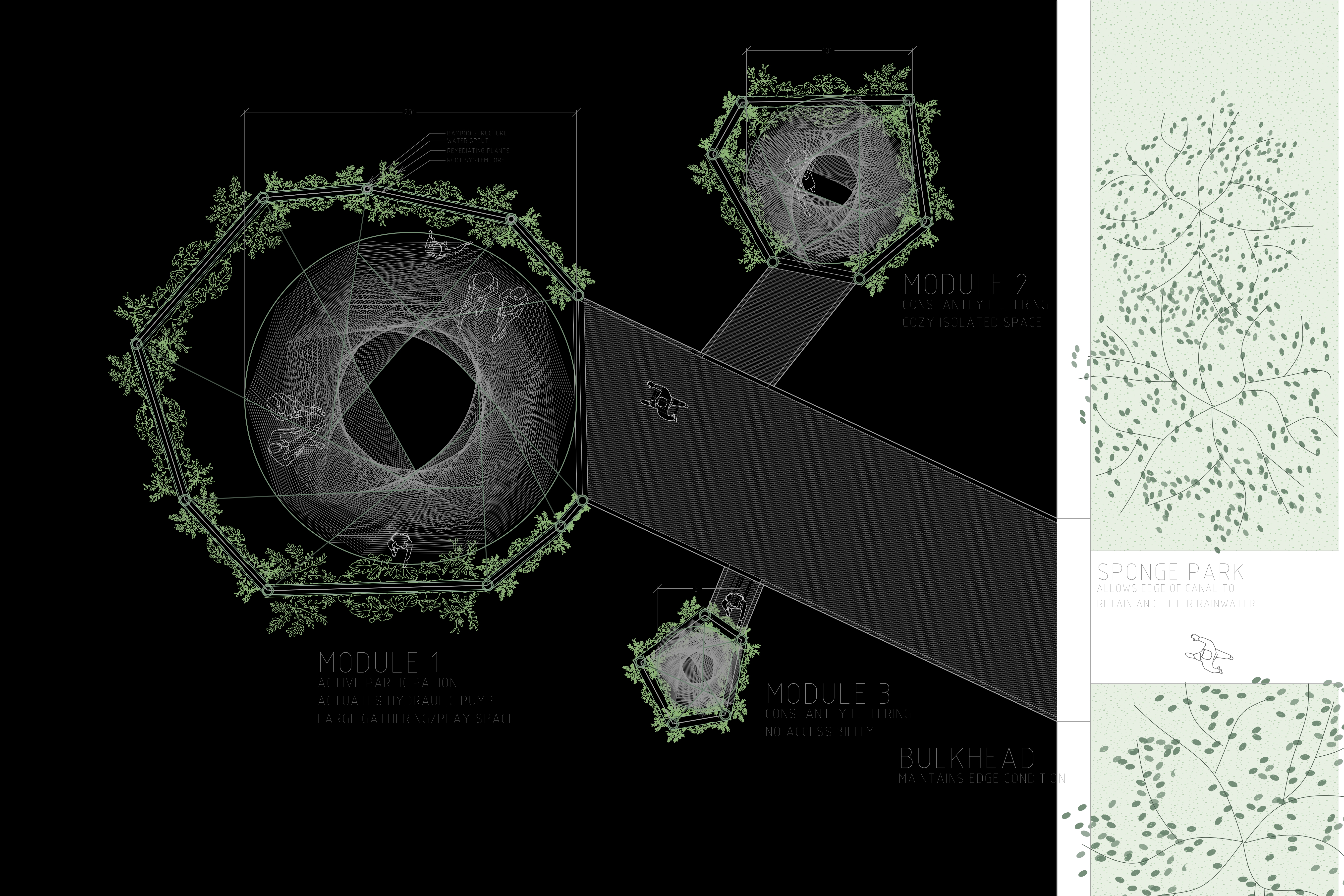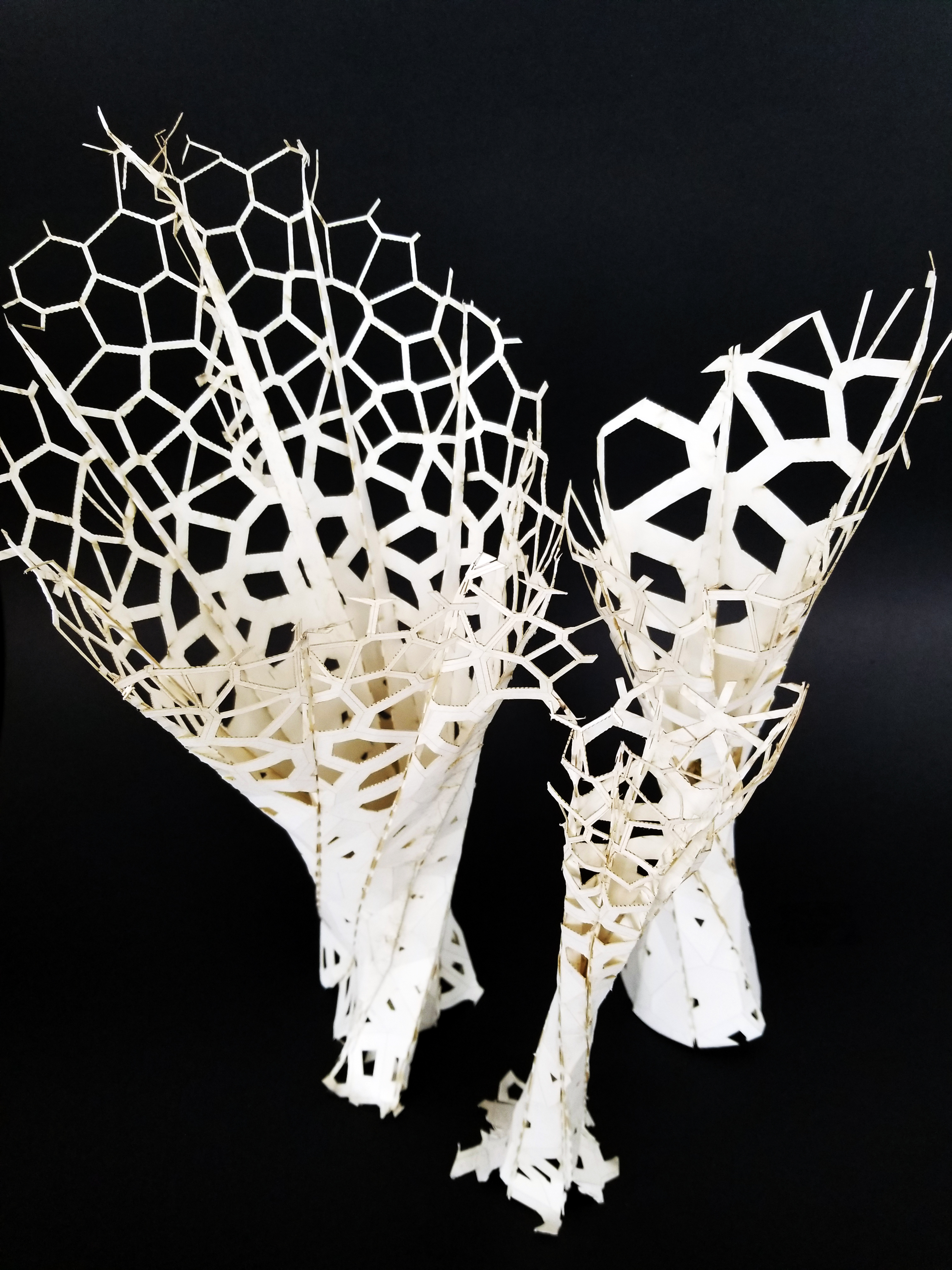︎ in collaboration with Xiao Yi
This project is the result of research into biological remediation techniques for the Newtown Creek canal, a classified superfund site, and how architecture can play a role in this process.
BELOW GRADE:
The structural members meet the canal floor, intentionally activating and exciting the built-up layer of sludge coating the canal floor, a process known as bioventing that releases contaminants, making them availble for filtration and harvest.
BELOW WATER:
Pollutants are filtered through geobacteria housed within the structure’s core. These geobacteria are able to survive underwater, and target oil-based contaminants. This is known as biodegredaton.
AT THE SURFACE:
Plants which have demonstrated bioremediation capabilities are installed on both the inside and outside of the cone’s surface. Within this double-skin, water is pumped and filters through the roots, which harvest toxins. This strategy is called phytoremediaiton.
ABOVE WATER:
A series of plaforms within and between the cones allow for access, maintenance, and exploration. This accessibility instigates, educates, establishes space for a community that otherwise has no waterfront access.
The vertical design facilitates these three forms of bioremediation, which work together to tackle the complicated condition of remediating a polluted canal and the solutions called for at each strata.
Superfund remediation often renders polluted waterways inaccessible and undesirable, using walls as a way to divide or hide, extracting polluted water to be treated at external processing sites.
We argue for a design that remediates onsite through natural processes like plants and bacteria, with soft edges and accessible space.


























